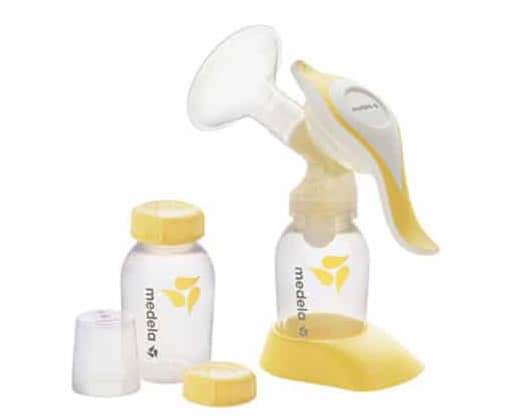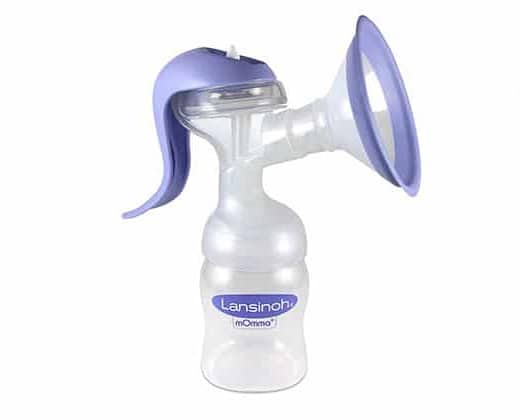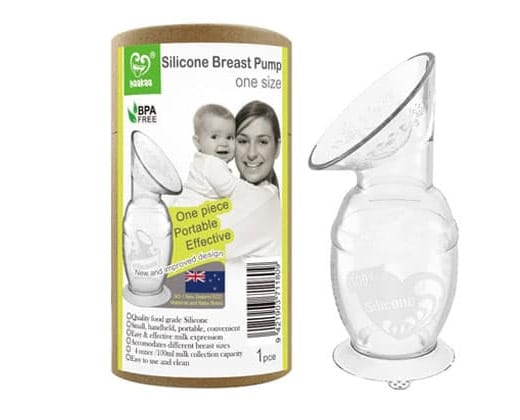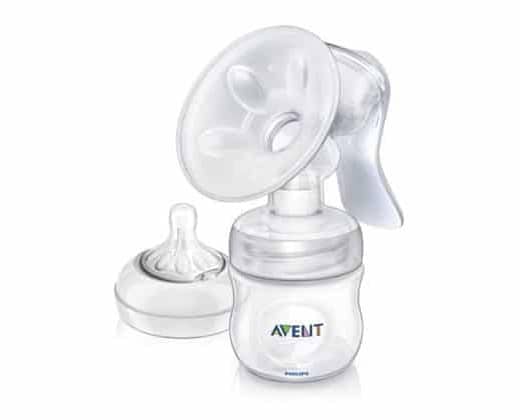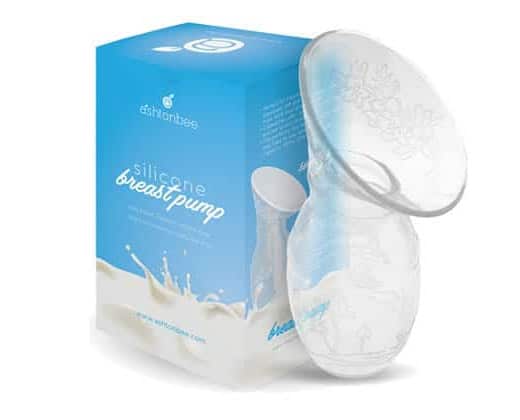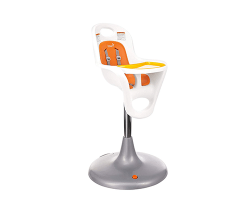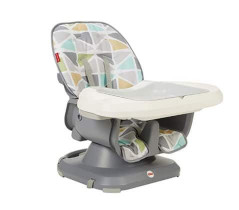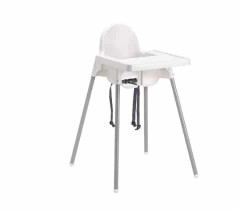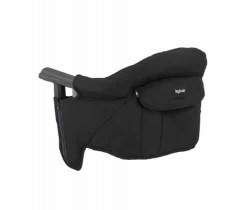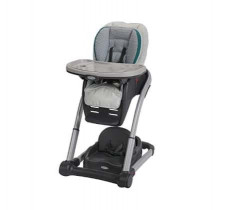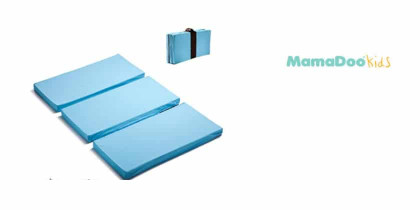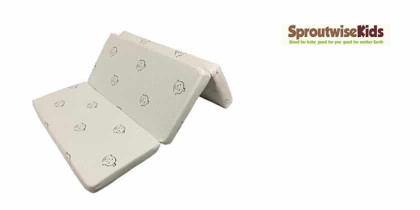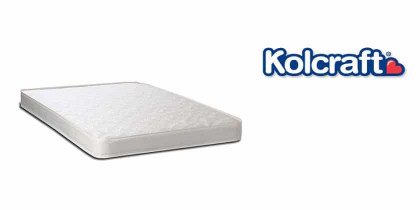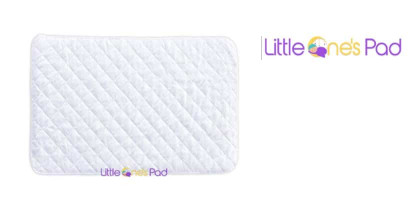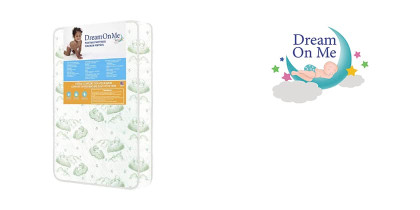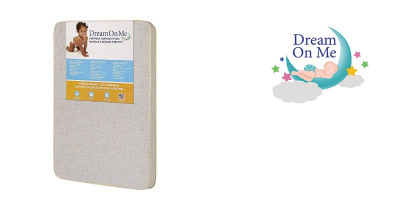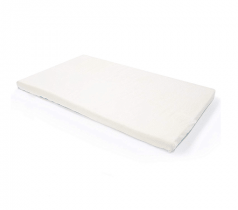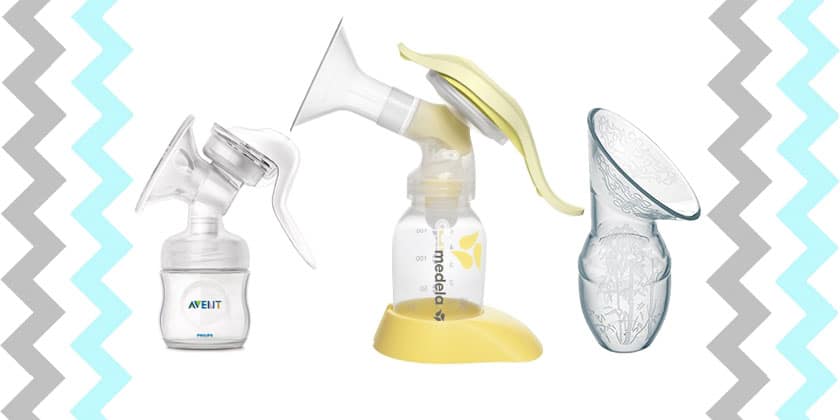
The right model of a breast pump is bound to give you much more flexibility when you’re about to do some breastfeeding. As you already know, these things come in various shapes and sizes – but how do you choose the right one for you?
If you’re feeding your baby with breast milk from a bottle, and do it only twice a week, a single breast pump will do the trick. And the manual breast pumps are lightweight, quiet, and compact – they’re designed for occasional use. Let’s see what the most popular models on the market have to offer!
| PRODUCT IMAGE | PRODUCT NAME | DETAILS | RATING |
|---|---|---|---|
| Medela Harmony CHECK PRICE AT AMAZON | Weight: 14.4 ounces Breastshield Size: 24mm (medium) Material: Lead Free Bottles included: 2 x 5oz bottles with lids *All parts that come into contact with breast milk are made without BPA. | 4.1/5 | |
| Lansinoh Manual Breast Pump CHECK PRICE AT AMAZON | Weight: 12 ounces Breastshield Size: 25mm (standard) and 30.5mm (large) Material: BPA Free Bottles included: 1 x 6oz bottle *Fewer parts – simple to use, simple to clean. BPA and BPS Free. | 4.0/5 | |
| Haakaa Breast Pump CHECK PRICE AT AMAZON | Weight: 4.8 ounces Breastshield Size: N/A Material: Silicone Bottles included: 1 x 4oz bottle *Especially soft and comfortable - made from 100% food grade silicone. | 4.5/5 | |
| Philips Avent Manual Comfort CHECK PRICE AT AMAZON | Weight: 12 ounces Breastshield Size: 19.5mm (medium) Material: Polypropylene, BPA-Free Bottles included: 1 x 4oz bottles with lids *Compatible with other Philips Avent feeding products. | 4.2/5 | |
| Ashtonbee Silicone CHECK PRICE AT AMAZON | Weight: 4 ounces Breastshield Size: N/A Material: Eco-friendly, food-grade silicone Bottles included: 1 x 4oz bottles with lids *Bonus lid included for convenient storage of milk in your fridge until needed. | 4.3/5 |
TOP RATED MANUAL BREASTFEEDING PUMPS
Medela Harmony – Editor’s Choice
The products of this Swiss company are among our favorites when it comes to baby-related equipment. This time, we have decided to take a more detailed look at Medela’s Harmony breast pump, as it is very popular with mothers all around the world. This model gives moms something they won’t find with the double electric pumps, and that’s portability. Medela Harmony is a simple, yet very efficient pump that stands as an affordable option to occasional pumpers, and is also a great supplement to your standard double electric pump. It is, after all, much more travel-friendly.
All of Medela’s breast pumps are designed to simulate the natural sucking patterns of infants, and the same goes for the Harmony model. The pump will first stimulate the breast and make the milk drop easily, after which it will switch the gear and starts sucking the milk as quickly as possible. It’s a feature that’s very rare when it comes to manual breast pumps and one that deserves some special praise. And, as we mentioned at the beginning of this text, the Medela Harmony is also very portable – it weighs just one pound. Hauling it around is a breeze, as it doesn’t take too much space in your purse or the bag.
One of the best things about this model is the fact that you can turn it into an electric breast pump if needed. There’s a conversion kit that you can purchase and use when you require more breast milk than usually. It’s yet another feature that’s very rare on other models, making Medela Harmony a truly outstanding choice. We should also mention that all parts of this pump that come in contact with milk are BPA-free – no fear of getting some serious health issues here.
In conclusion, Medela Harmony is probably the best manual breast pump on the market right now. Not only is it lightweight and BPA-free, but it’s also highly efficient for a manual pump and can even be converted into an electric model when needed.
PROS
- Efficient for a manual pump
- Very lightweight
- Convertible
- BPA-free
CONS
- Exhausting to use sometimes
- Requires both hands
Lansinoh Manual Breast Pump – Perfect for On-The-Go
Next up is Lansinoh Manual Pump, which is a simple model that’s very easy to operate with. The thing that sets this device apart from the competition is the presence of two modes – Stimulation and Expression. When combined, they allow greater milk production in a short amount of time, which is pretty outstanding for a manual model. There’s also a number of other features that make this model worth the money, like the fact that it’s lightweight, BPA-free, and discrete. It’s time to take a closer look – join us, and let’s do it together!
In our opinion, it’s the little touches that make the difference when it comes to the boring business of milk expression. One of the first things we’ve noticed about this model is its great design – the shape and the handle make Lansinoh Manual Breast Pump very easy to operate with. The model is also very easy to assemble, and we found that the spare diaphragm and the extra valves can come in very handy – these parts are the ones most likely to break on a manual pump.
One of the vital features of the Lansinoh Manual Breast Pump is the included bottle stand that makes the model much more stable. If you’ve ever had your baby kick the bottle and spill half an hour worth of pumping, you know how useful this feature actually is. The pump is quite silent, although we noticed the odd squeak. This squeak is nothing serious, but it is loud enough to put the baby off if you’re feeding her on your other breast. Another thing we liked is that the pump is fully compatible with the Momma Bottles, also made by Lansinoh, which are among the best on the market. They come with natural wave nipples, allowing you to use them for pumping, storing, and feeding.
We think that the Lansinoh did a pretty good job here – they have manufactured a manual breast pump that features an ergonomic design and high portability. We recommend it!
PROS
- Straightforward and ergonomic design
- The Stimulation and Expression modes
- Discrete and lightweight
- BPA-free
CONS
- An odd squeak while pumping
- Fast pumping is tiresome
Haakaa Breast Pump – Simple, Effective, and Easy to Use
If you’re looking for a simple solution to your breast pumping needs, the Haakaa Breast Pump is an excellent choice. This is a one-piece model that can serve as both a milk collector and a manual breast pump. Once you place it onto your nipple, it draws the milk itself and requires no effort from the user. As it is hands-free and quite affordable, the Haakaa Breast Pump became quite popular with the users, which is exactly why we think that it deserves a more in-depth look. Let’s do it!
We don’t think that there are many manual pumps that are as easy to use as the Haakaa Breast Pump is. All you have to do here is to gently squeeze its bottom part, place it onto your breast (onto your nipple-areola), and then release your hand. The Haakaa will stay in place and apply pressure to your breast, and the milk will flow out immediately. And if doesn’t, you’ll have to do a bit of stimulation by gently squeezing the pump a few times. But, if you’re using it while nursing a baby, don’t worry – the infant will initiate the flow for you, and you won’t have to do anything.
Fortunately, this model is free of all forms of PVC, BPA, and phthalates, which means that it’s completely safe for use and bears the important BPA-free certification. The whole thing is made out of 100% food grade silicone and feels very comfortable on the breasts. Washing is another field where the Haakaa Breast Pump excels – it is dishwasher safe, and can be easily sterilized in the boiling water. It is also fully compatible with all breast bottles made by Haakaa, which is pretty convenient if you already own some of their products.
All in all, the Haakaa Breast Pump is a true champion of simplicity. With no buttons, cords, or batteries, it is incredibly easy to use and stands as a perfect solution for moms looking for an affordable manual breast pump.
PROS
- Very easy to use
- Made out of food-grade silicone
- Easy to clean
- Compatible with Haakaa bottles
CONS
- Not as efficient as other models
- Not safe for milk storage
Philips Avent Manual Comfort – Very Comfortable, but a Little Noisy
Everyone knows about Phillips! This famous Dutch company specializes in electronic devices, but sometimes also manufactures products that they aren’t that famous for. This time, they decided to make a manual breast pump – and its name is the Philips Avent Manual Comfort. Like with all manual models, the time to pump out the milk is determined by the quantity of mom’s milk, but Phillips claims that this model is as efficient as the hospital-grade pumps. Are they right about that? Let’s find out!
One of the first things to notice about the Philips Avent Manual Comfort is that it features a compact design, which makes the device very lightweight. Transporting and storing this device is very easy, which will be of crucial importance to moms who are always on the go. The soft massage cushion that’s present on the pump features a soft, velvety texture that feels very comfortable on the breast. It has an iconic petal cushion that mimics the baby’s suckling, and thus promotes the necessary stimulation. We think that Phillips did a really good job here and that there aren’t many models that feel as comfortable as the Philips Avent Manual Comfort does.
Thanks to its unique design, the pump allows the milk to flow directly from the breast into the bottle – even if you’re sitting up straight. This allows a greater degree of comfort and doesn’t require the user to lean forward to make sure that all of the milk will end up in the bottle. It’s also worth noting that this pump uses a large duckbill valve which is very easy to pull out and insert, unlike on the older models. Our only major complaint is that the pump can get quite noisy on some occasions.
To sum it up, the Philips Avent Manual Comfort is certainly one of the better manual pumps on the market, and certainly the most comfortable one. It’s worth considering for purchase.
PROS
- Very comfortable
- Large duckbill valve
- Lightweight and compact
- Compatible with other Phillips Avent products
CONS
- A little noisy sometimes
- Pumping manually can be physically demanding
Ashtonbee Silicone – Very Effective Hand Pump with Lid
Not all moms can afford to buy expensive manual pumps – some are searching for an affordable solution. And that’s exactly what the Ashtonbee Silicone manual breast pump is! Unlike some other models we’ve reviewed, this pump comes at a truly reasonable price and is an excellent choice if you’re trying to save some money. Of course, the low cost doesn’t mean that this model is unusable – it is, on the contrary, highly efficient and hence very popular with moms all around the world. Let’s see what it has to offer!
This little pump is quite similar to the Haakaa pump that we reviewed before, as it also features that simple look and has no cords, buttons, or batteries. This design ensures that every drop of the milk will end up in the container, as long as you’re patient. It also allows effortless hands-free operation, which is of crucial importance to moms who want to pump the milk while they’re feeding the baby with their other breast. Just like the Haakaa pump, the Ashtonbee Silicone is also made out of the food-grade silicone, which is eco-friendly and contains no harmful substances (it’s BPA-free).
As it is very compact and lightweight, the Ashtonbee Silicone is perfect for moms who travel a lot and are always on the go. Its size allows you to conveniently put the pump into your purse, or to store it inside your glove compartment. As the name suggests, the package comes with a useful bonus – the lid. The lid will let you store the milk in the fridge, without the risk of spilling the precious liquid and making a mess. The manufacturer also provides the 100% lifetime warranty, which is something we don’t see that often and deserves a commendation.
As you can see, this little pump has a lot of good things going for it. It is not perfect, of course, but it’s an ideal choice if you’re looking for a cheap, simple solution to your pumping needs.
PROS
- Hands-free operation
- Lid for the convenient storage of milk
- Compact and great for traveling
- No harmful substances in the material
CONS
- Taking the pump off the areola can be painful
- Falls off if you move too much
HOW MANUAL BREASTFEEDING PUMP WORKS?
Even though the manual pumps are far less popular than the electric ones, there are, actually, a number of reasons because of which a mom would choose a manual instead of the electric model. The price is one – you can get an excellent manual mode for less than $50, while the top-line electric pump could cost you at least $250. A manual model is also beneficial in the absence of electricity or if you’re in a car, and for the moms who aren’t pumping frequently. The following steps will help you understand how to use it correctly:
- Read the manual and get to know more about your model.
- Make sure that all parts of the pump are clean, and wash your hands.
- Place the breast shield onto your nipple, and make sure that it’s centered well.
- Begin with the pumping. It will take a few minutes before the milk starts flowing.
- Once the milk starts flowing, adjust your rate of pumping and make it inconsistent with purpose, simulating the baby’s motions.
- Don’t forget to switch breasts every 10 to 15 minutes.
- When you’re done, remove the shield.
- Unscrew the bottle and put a cap on it.
- Wash all parts that came into contact with milk or the breast with warm water.
- Air-dry the pieces.
Now that you’re done, remember that you need to use the milk in the next four to six hours if you leave it at the room temperature. The fridge can keep the milk cool up to one day.
HOW TO KNOW IF THIS TYPE IS RIGHT FOR ME?
The good news is that there are, actually, quite a lot of excellent breast pumps on today’s market. On the other hand, choosing the one that will suit you the best can be really difficult, especially if you don’t know a lot about these devices. Many ladies think that buying a manual model isn’t really the wisest decision, but they’re, actually, wrong. Like all other types, the manual breast pumps also have their benefits, and they’re the best choice for mothers who are expressing the milk only on some occasions. Let’s see if the manual breast pump is the right choice for your pumping needs:
WHY SHOULD I USE A MANUAL BREAST PUMP?
One of the biggest advantages of the manual models is that they’re really simple, and also convenient in size. If you’re going to express your breast milk on a regular basis, you might want to buy an electric pump. But many mothers claim that the manual models feel far more natural, as they’re closely mimicking the baby’s sucking motions.
They are also very comfortable – if you’re going to use a manual model, you will be able to control the rate of suction yourself. Once you place the cup over your nipple, you can squeeze the handle and thus create the rhythmic vacuum which can stimulate the flow of the milk. At first, you’ll have to use both of your hands, but you’ll get used to using just one hand later.
These kinds of pumps are smaller, quieter, lighter, and far more affordable than the electric models. Once you get used to them, you will be able to feed the baby with one breast and pump out the other, and there won’t be any motor noise that could disturb the baby.
It’s an ideal low-cost option if you’re doing the pumping only now and then, and when you’re not at home. But if you want to feed your infant solely with pumped-out milk, you ought to invest into one of those electric models – they are quicker and more efficient.
BENEFITS OF THE MANUAL BREAST PUMPS
• Cheaper than the electric models
• It costs nothing to run one after you’ve bought it
• With only a few components, they’re easier to clean and sterilize
• Simple to use
• Quiet
• Lightweight
• Compact – they easily fit into purses
CHOOSING THE BEST MANUAL BREAST PUMP – BUYER’S GUIDE
Manual breast pumps are great – but selecting a good model can be difficult. We’ve put together some key points that will help you choose a model that will serve you well for the months to come.
What to consider while choosing your first manual breast pump
- Efficiency
This is one of the first things to have in mind. We’re pretty sure that no mother will want to spend a lot of time hooked to a manual breast pump. One of your first questions will probably be: will this pump produce enough milk for my infant and how long will it take? When talking about the quantity of milk and the pumping time, we think that this is entirely subjective, because every mother is, of course, unique. Most breast pumps will produce a same amount of milk in a consistent way.
- Comfort
Most pumps will feel quite uncomfortable in the beginning, but, generally, they will slowly become more and more comfortable as the time goes by. Therefore, we have to say that the comfort is a pretty important factor to consider while purchasing your first breast pump. The comfort of an individual model will depend on the way in which its suction settings and the pumping process works.
- Ease of use
The ease of use is of crucial importance if you’re going to be pumping the milk exclusively – if you’re a mother who travels a lot, works a lot, or is always at different places.
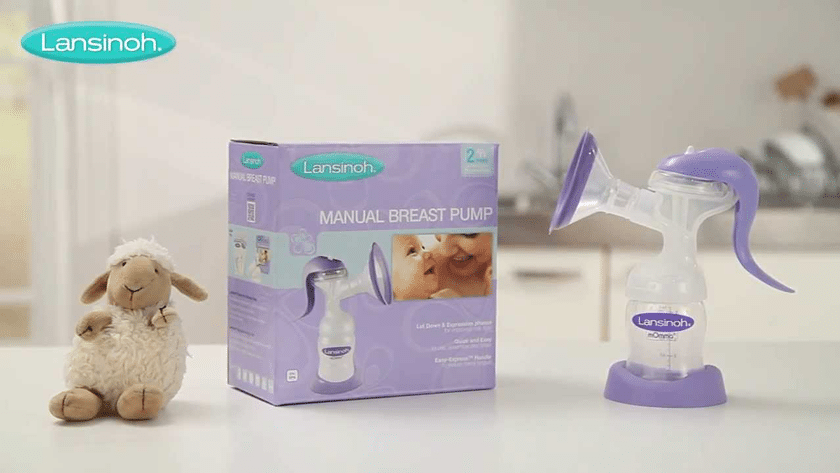
- Portability
If you’re planning to do a lot of traveling and need to bring your manual breast pump with you, the portability should also be on the top of your list. Generally, the ladies who travel with pumps do so for two reasons – work or vacation. You’ll have to make sure what kind of storage does the model offer – cooler for the milk, bag for the pump, and similar things.
- Hygiene
First-time parents are always very concerned about hygiene, and they should be. Pumps come with many parts, and all of them will have to be cleaned and sterilized. You will have to make sure that there are no molds or similar things left in the pump, as such substances could contaminate the milk and be very harmful to your baby.
- Accessories
Even though it might not seem so, the accessories are actually vital for quality pumping sessions. They will help you with the effortless transport of your model, as well as with safe and efficient storage of the precious liquid. For some models, accessories like the tote bags will come in the package, but in some cases, you will have to purchase them separately. Some other accessories worth having are the insulated coolers, bottles, lids, and storage bags.
FREQUENTLY ASKED QUESTIONS ABOUT MANUAL BREAST PUMPS
Q: Can I sterilize my manual breast pump?
A: Yes, you can, and you should. With a sterilized manual breast pump, there won’t be any danger of your baby consuming milk that’s been contaminated with substances such as mold.
Q: Can I store the breast milk in bottles?
A: Yes. If it’s stored in the fridge, your breast milk will last longer – for at least 24 hours. In the room temperature, the milk will be usable for only 4 to 6 hours.
Q: What do I do if I lose the suction?
A: If you experience a loss of suction with your pump, you’ll need to check out the silicone valve that is hanging down into the bottle. If the split across the bottom isn’t open, give it a careful massage between your thumb and the finger and open it up. If this doesn’t improve the suction, you will have to contact the manufacturer.
Q: Why am I not getting as much milk as I expected?
A: Lots of mothers only manage to get a few drops once they start pumping, and this can make them feel low. But, all is not lost – you just need to find your own rhythm and practice.
Q: Can I put my manual breast pump in the dishwasher?
A: Most of the popular manual models are dishwasher-safe, but you will still need to check out the instruction manual just to be sure.
Q: Why do mothers get engorged?
A: At the third day of postpartum, the breasts of some mothers might swell – this is called engorgement. Luckily, this is just a temporary condition, and nothing to be afraid of. The best way to alleviate the engorgement is to breastfeed frequently, although the baby might have trouble with latching to your engorged breasts.
CONCLUSION
As you can see, the manual breast pumps are actually a great choice, and they’re even better than the electric models in some areas. It’s incredibly easy to assemble one, as there aren’t as many parts, and you don’t have to spend too much money to get one – they’re very affordable. They don’t need a power source to be usable and can be a great backup alternative for your electric pump. And, unlike the electric models, they will also allow you to set your own pace of milk expressing, which is one of their key selling points.
The only problem here is the fact that there are literally dozens of different brands and models on the market, and selecting just one to be your first manual breast pump could prove to be very difficult. But, with our honest reviews and informative articles, this should be much, much easier!
In our opinion, the best manual model on the market is the Medela Harmony, which is the product of our choice and a model that’s definitely worth considering for purchase. Of course, you should also check out the other manual breast pumps that we’ve reviewed – you just might find the thing that you’ve been searching for!

